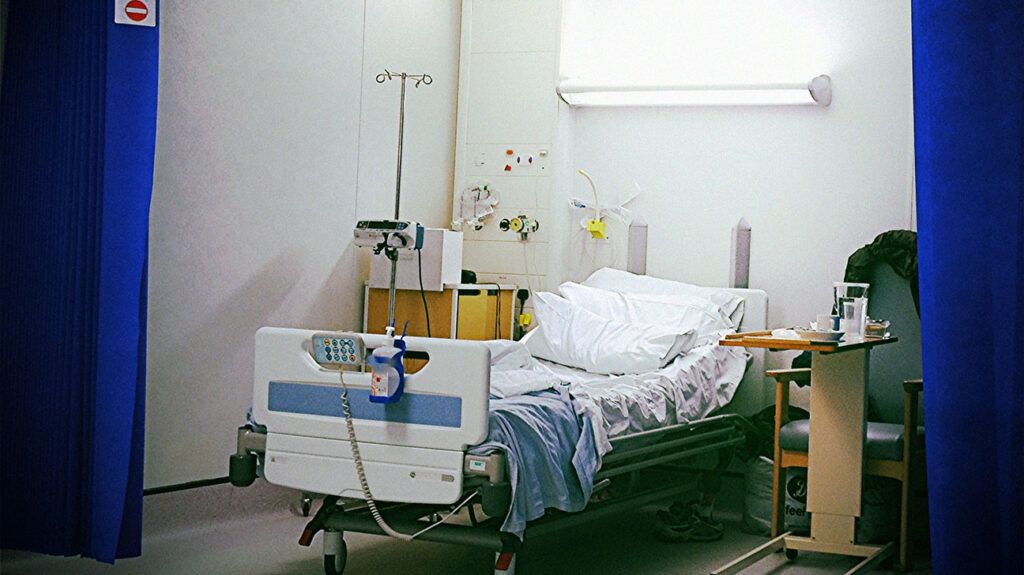Sickle cell disease: UK approves first ever gene therapy

- As of 2021, almost 8 million people around the world live with sickle cell disease.
- Most treatment of sickle cell anemia is through invasive surgical procedures.
- The United Kingdom is the first country to approve the use of the world’s first gene therapy for treating sickle cell disease and a type of sickle cell disease called beta-thalassemia.
As of 2021, almost 8 million people around the world live with sickle cell disease — an inherited blood disorder that causes the body’s red blood cells to become misshapen and not last as long as healthy cells.
Researchers estimate that about 250 million people globally carry the gene that causes sickle cell disease.
Treatment for sickle cell disease — also known as sickle cell anemia — typically involves medications and surgical procedures including blood transfusions and bone marrow transplants. These surgical procedures can be invasive and come with potential complications.
Recently, the United Kingdom became the first country to approve the use of the world’s first gene therapy for treating sickle cell disease and a specific type of sickle cell disease called beta-thalassemia.
Sickle cell disease tends to affect people of African ancestry, while beta-thalassemia tends to affect people who are of Mediterannean, South Asian, Middle Eastern, and North African descent.
What is sickle cell disease?
Sickle cell disease affects the red blood cells in the blood, which are responsible for carrying hemoglobin throughout the body.
Hemoglobin is a protein that binds to oxygen and delivers it to the tissues and organs throughout the body.
The disease causes red blood cells to become misshapen, forming a C or “sickle” shape. These red blood cells do not live as long as healthy ones. This can lead to anaemia.
These cells also become very sticky, causing them to form clumps. This can cause blockages in a person’s veins and arteries, causing pain.
Because sickle cell disease is genetic, a person can only get it if they receive the gene from both biological parents. Symptoms of the condition start to appear within the first year of life, typically around the age of 5 months.
Why are new treatments for sickle cell needed?
People living with sickle cell disease experience a great deal of pain — including chronic pain — due to the red blood cell clumps that form in the bloodstream.
Additionally, people with sickle cell disease are at a higher risk for infections, stroke, vision loss, blood clots, sleep disorders, kidney problems, and liver issues.
Currently, treatments for sickle cell disease include medications mainly used for pain management and surgical procedures including blood transfusions and bone marrow — also known as stem cell — transplants.
Some people with sickle cell disease will only need one blood transfusion, while others may need chronic transfusions received every few weeks.
Blood transfusions are generally accepted as very safe. However, there are potential complications including allergic reactions, fever, and transmission of infections.
A bone marrow transplant is a more invasive procedure and previous studies show it can be very painful.
Bone marrow transplants have several potential complications, including infections, nausea, graft failure, lung problems, hair loss, vision issues, and mouth and throat pain.
Gene therapy for sickle cell disease
Over the past few years, scientists have started to look for gene therapy options for sickle cell disease.
In a study whose results were published in February 2019, researchers were able to use a new gene therapy to reverse disease symptoms in two study participants with sickle cell disease.
In January 2021, researchers reported successfully using CRISPR-Cas9 gene editing to target the BCL11A gene, a gene that allows the fetal hemoglobin gene to be switched off at birth, triggering the other hemoglobin gene to be transcribed instead.
By removing the gene that switches off the fetal hemoglobin gene, the nonfaulty fetal hemoglobin gene can be transcribed instead of the faulty hemoglobin gene typically expressed in people with sickle cell disease.
The new gene therapy recently approved for use by the U.K.’s Medicines and Healthcare Products Regulatory Agency (MHRA), called Casgevy (exagamglogene autotemcel), is based on the CRISPR gene editing tool.
Manufactured by Vertex Pharmaceuticals Incorporated and CRISPR Therapeutics, Casgevy was authorized for use in people ages 12 years of age or older with sickle cell disease and certain specifications.
Casgevy reportedly met its primary outcomes of leaving study participants with sickle cell disease or transfusion‑dependent beta-thalassemia free from having severe vaso-occlusive crises or being transfusion-dependent for at least 12 consecutive months, in a clinical trial for each condition.
In June 2023, the United States Food and Drug Administration (FDA) accepted the Biologics License Applications for exagamglogene autotemcel under the trade name exa-cel for the treatment of sickle cell disease and transfusion-dependent beta-thalassemia.
The FDA also granted Priority Review and Standard Review for target dates of December 8, 2023, and March 30, 2024, respectively.
Cautiously encouraging news
Many in the medical community expressed their appreciation of the U.K.’s approval of Casgevy.
“Today’s announcement that MHRA has approved Casgevy as the first gene therapeutic to treat beta-thalassemia is excellent news for the patients and the gene therapy scientific community,” said Prof. David Rueda, chair in molecular and cellular biophysics at the Imperial College London, in a comment to Science Media Centre.
“The published results of the clinical trial look very promising, too,” he noted.
Nevertheless, he added a note of caution:
“However, it is well known that CRISPR can result in spurious genetic modifications with unknown consequences to the treated cells. It would be essential to see the whole-genome sequencing data for these cells before coming to a conclusion. Nonetheless, this announcement makes me feel cautiously optimistic.”
“This is a landmark approval which opens the door for further applications of CRISPR therapies in the future for the potential cure of many genetic diseases,” commented Prof. Dame Kay Davies, Dr. Lee’s Professor of Anatomy Emeritus at the University of Oxford, also for Science Media Centre.
“The challenge is that these therapies will be very expensive so a way of making these more accessible globally is key,” she explained.
Dr. Lewis Hsu, chief medical officer for the Sickle Cell Disease Association of America, expressed more vigorous enthusiasm about the MHRA approval to Medical News Today:
“The approval of Casgevy marks a landmark moment in time for individuals with sickle cell disease in the United Kingdom. It is encouraging to see this decision come through as we await a verdict from the FDA about exa-cel’s viability in the United States. If approved for use in the United States, this therapy would be a major advance in the treatment of sickle cell disease; however, there are valid concerns for individuals in both domestically and abroad about accessibility and the potential for adverse effects.”
Source: Read Full Article


